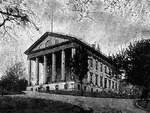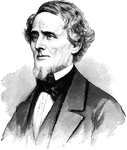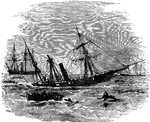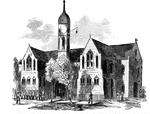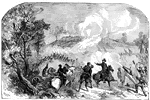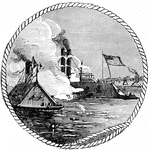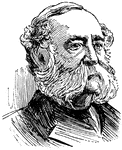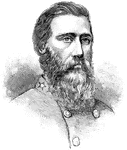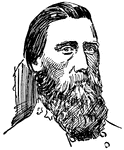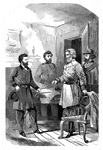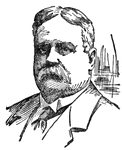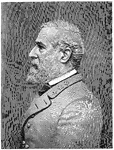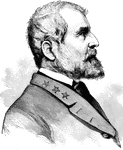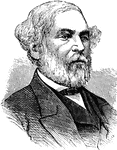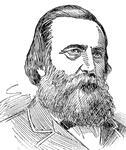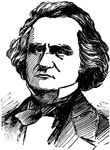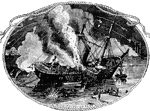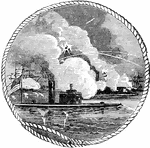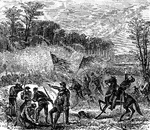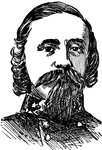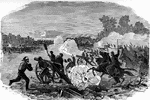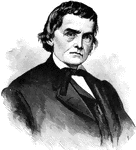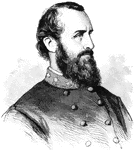
Advance of the Federal Army towards Yorktown
When General McClellan reached Locst Hill, on april 2nd, 1862, he found fifty-eight thousand men and…

Union Prisoners Confined at the Confederate Prison at Andersonville
Union soldiers being held at Andersonville, a Confederate prison.
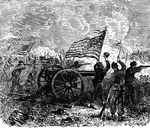
Battle of Atlanta
Showing the Battle for Atlanta, which Sherman won for the Union during the Civil War.

Castle Thunder, Richmond, VA, Where Union Prisoners Were Confined
Castle Thunder, one of the Confederate prisons known for its abominable conditions.

Confederate Batteries
"Fredericksburg, Va., and the Confederate batteries and pickets, as seen from Falmouth Heights, headquarters…

A Confederate Blockade-Runner
The British ran a blockade of Southern ports with vessels carrying arms, ammunitions, and other supplies…

Craney Island
"Blowing up the Confederate forts on Craney Island, by Commodore Goldsborough, June 2nd 1862." —…
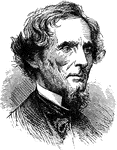
Jefferson Davis
Jefferson Davis, a senator from Mississippi who was elected president of the Confederate States of America.…

Bombardment of Fort Sumter, April 12, 1861
Confederate forces bombarding Fort Sumter on April 12, 1861

Passage of Forts Jackson and St. Phillip
Depiction of the battle on the Mississippi between Confederate and Union forces at Forts Jackson and…
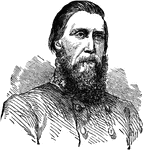
John Bell Hood
John Bell Hood (June 1 or June 29, 1831 - August 30, 1879) was a Confederate general during the American…
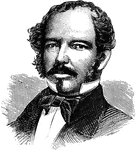
General Joseph E. Johnston
Confederate General Joseph E. Johnston, who surrendered two weeks after Lee.
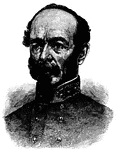
Joseph E. Johnston
(1807-1891) Soldier that fought in the Mexican War and in the Confederate side of the Civil War.

Kearsarge Sinking the Alabama
The sinking of the Alabama by the Union Kearsarge. Some Confederates aboard the Alabama escaped to England…
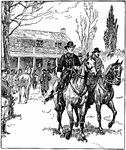
General Lee Leaving After the Surrender
General leaving after the surrender of the American Civil War.

Libby Prison, Richmond
Libby Prison was a Confederate Prison at Richmond, Virginia, during the American Civil War.
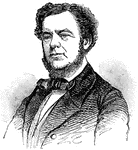
Stephen Russell Mallory
Stephen Russell Mallory (1813 – November 9, 1873) was a United States politician and the Confederate…
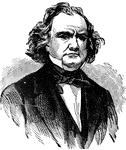
James Murray Mason
James Murray Mason (November 3, 1798 – April 28, 1871) was a United States Representative and United…

William Polk
(1816-1898) Military and Political leader of Texas. He raised Confederate troops in the West
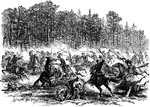
Sixth Regiment
"Gallant charge of the Sixth Regiment, United States Regular Cavalry, upon the Confederate Stuart's…

Edmund Ruffin
Edmund Ruffin (January 5, 1794 – June 18, 1865) was a farmer and slaveholder, a Confederate soldier,…
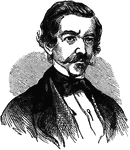
Raphael Semmes
Raphael Semmes (September 27, 1809 – August 30, 1877) was an officer in the United States Navy…

Crossing of Shenandoah River
"Colonel Pilson's Battery shelling the rear guard of the Confederate General Jackson's Army, at the…
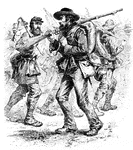
Confederate Soldiers
An illustration of a group of confederate soldiers walking in full uniform and armed.
Strasburg
"Reconnoissance of the Confederate poistion at Strasburg, VA., by a detachment of cavalry under General…



